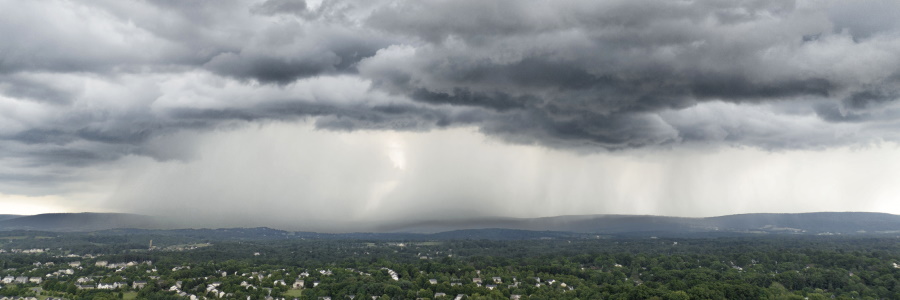Disaster recovery and preparedness are crucial components of a robust business strategy, especially in the face of winter storms that can cause significant power and internet disruptions. This blog post delves into the importance of power backup, internet redundancy, and best practices for ensuring operational resilience during such events. We will also discuss the frequency and impact of winter storms in the San Francisco Bay Area, drawing on historical data and expert insights.
Power Backup and Redundancy
Winter storms often result in power outages that can cripple businesses. The significance of having a reliable power backup system cannot be overstated. This could involve generators, UPS (Uninterruptible Power Supply) systems, or alternative energy sources such as solar panels. The redundancy of these systems ensures that if one source fails, another can take over, minimizing downtime and maintaining critical operations.
Internet Redundancy: A Necessity
Internet redundancy is the practice of ensuring multiple internet connections from different ISPs (Internet Service Providers) or through different mediums (like fiber, satellite, etc.). This setup is vital because a single internet outage can isolate a business, impeding communication and access to cloud-based resources.
Best Practices for Internet Redundancy
- Diversify ISPs: Contracting with multiple ISPs can ensure connectivity even if one experiences an outage.
- Alternate Technologies: Utilize different technologies (fiber, satellite, cellular) for each internet connection.
- Regular Testing: Conduct regular tests to ensure failover systems function seamlessly during an actual outage.
- Prioritize Critical Operations: Identify and prioritize internet needs for essential business operations.
Storm Frequency in the San Francisco Bay Area
The San Francisco Bay Area has experienced various significant storms. A notable evaluation framework, the Bay Area Storm Index (BASI), ranks storms based on wind and rain metrics. For instance, the storm on December 12, 1995, received the highest BASI rating of 10, indicating its severity. Other notable storms occurred on December 22, 1955, with a BASI of 9.8, and October 12, 1962, with a 9.7 rating【8†source】【9†source】.
Historical Power Outages in the Bay Area
Power outages are a common consequence of severe storms in the Bay Area. For example, more than 130,000 Bay Area households experienced power outages during a particular storm, with Sonoma County being the hardest hit, affecting 28,000 customers【23†source】. These outages can last from several hours to days, depending on the severity of the storm and the extent of damage to power infrastructure.
Federal Guidelines for Business Preparedness
The U.S. government provides comprehensive guidelines for businesses to prepare for disasters. Ready.gov’s Ready Business Toolkit series offers hazard-specific guides, including for power outages and severe winds, which are pertinent to winter storms. These toolkits provide a step-by-step guide to enhance preparedness within an organization【31†source】.
Businesses are advised to develop comprehensive preparedness plans encompassing communication planning, IT support and recovery, and continuity plans. Ready.gov and FEMA offer various resources to assist in this planning process【32†source】. Training and exercises are also emphasized as crucial components of preparedness, ensuring that all employees are aware of their roles during an emergency【33†source】.
Common Errors and Omissions by Business Owners
- Lack of Comprehensive Disaster Recovery Plan: Not having a detailed plan that covers various disaster scenarios.
- Inadequate Training and Drills: Failing to train employees and conduct regular emergency response drills.
- Underestimating Backup Needs: Not investing in sufficient backup power and internet solutions.
- Neglecting Data Backup: Overlooking the importance of regular data backups, both onsite and offsite.
- Poor Communication Strategy: Lack of a clear communication plan for employees and stakeholders during an outage.
Top 5 Recommendations for Business Owners
- Invest in Redundant Power Sources: Generators, UPS systems, and renewable energy options.
- Establish Internet Redundancy: Multiple ISPs and diverse technologies.
- Regular Data Backups: Implement both cloud-based and physical data backup solutions.
- Emergency Response Training: Regular training and drills for employees.
- Comprehensive Disaster Recovery Plan: Develop and regularly update a disaster recovery and business continuity plan.
Building a Disaster Preparedness Plan
- Assess Risks: Identify potential hazards specific to your location and industry.
- Develop a Plan: Create a comprehensive disaster recovery and business continuity plan.
- Invest in Infrastructure: Ensure adequate backup systems for power and internet.
- Train Employees: Conduct regular training sessions and emergency drills.
- Regularly Review and Update: Continuously assess and improve your preparedness plan.
In conclusion, the increasing frequency and intensity of winter storms, especially in areas like the San Francisco Bay Area, necessitate a proactive approach to disaster recovery and preparedness. By understanding the risks, investing in redundant systems, and training employees, businesses can significantly mitigate the impact of power and internet outages, ensuring operational resilience and continuity.


